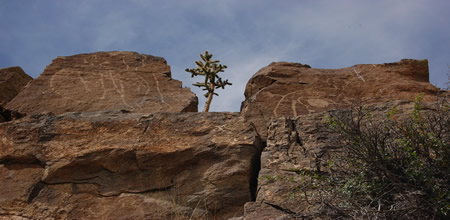
Threats and Preservation
 All archaeological sites are at some risk of degradation
resulting in loss of information content. One of the primary aims of the
Galisteo Basin Archaeological Sites Protection Act is to minimize damage of any
form from happening to the remarkable sites on the list. Damage to sites falls
into several categories: natural erosion, vandalism by people, animal impacts,
unintentional wear and tear from visitation, construction damage (“progress”
and “development”). Especially in areas where sites have become less exposed to
human impacts such as pot hunting or rock art defacement, one of the most
serious forms of site loss is through erosion. Since a favored location for
settlement was on water courses, many of the Galisteo sites have experienced
erosion, in some cases of a severe degree.
All archaeological sites are at some risk of degradation
resulting in loss of information content. One of the primary aims of the
Galisteo Basin Archaeological Sites Protection Act is to minimize damage of any
form from happening to the remarkable sites on the list. Damage to sites falls
into several categories: natural erosion, vandalism by people, animal impacts,
unintentional wear and tear from visitation, construction damage (“progress”
and “development”). Especially in areas where sites have become less exposed to
human impacts such as pot hunting or rock art defacement, one of the most
serious forms of site loss is through erosion. Since a favored location for
settlement was on water courses, many of the Galisteo sites have experienced
erosion, in some cases of a severe degree.
Perhaps one of the most gratuitous forms of damage is intentional defacement of rock art images. This often takes the form of name signing, sometimes of imitation of the original images, theft of whole rocks with images, and sometimes even firearm target practice.
Preservation in the face of these threats can take two main forms: exclusion of the public and monitoring of sites on the one hand, and correction of erosional situations through watercourse alteration and stabilization of deposits.

© New Mexico Office of Archaeological Studies, a division of the New Mexico Department of Cultural Affairs.
The Center for New Mexico Archaeology
7 Old Cochiti Road
Santa Fe, NM 87507
505-476-4404
Fax: 505-476-4448

